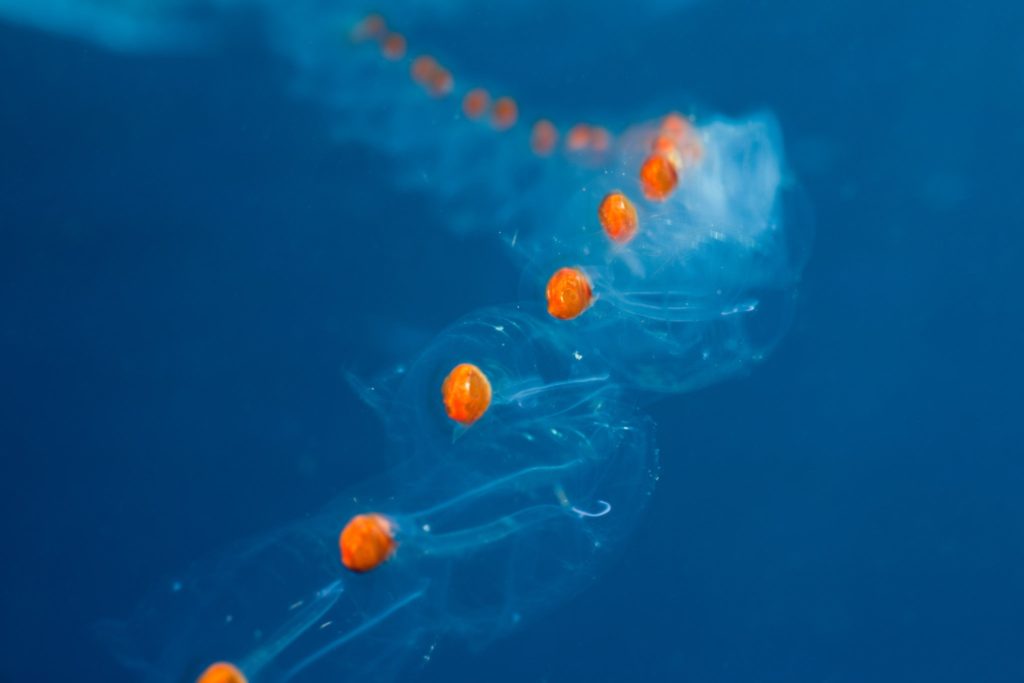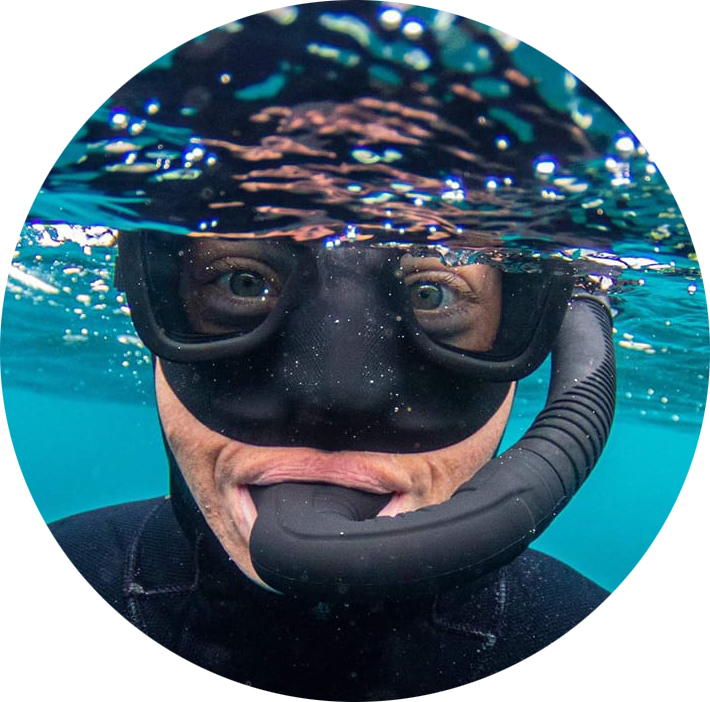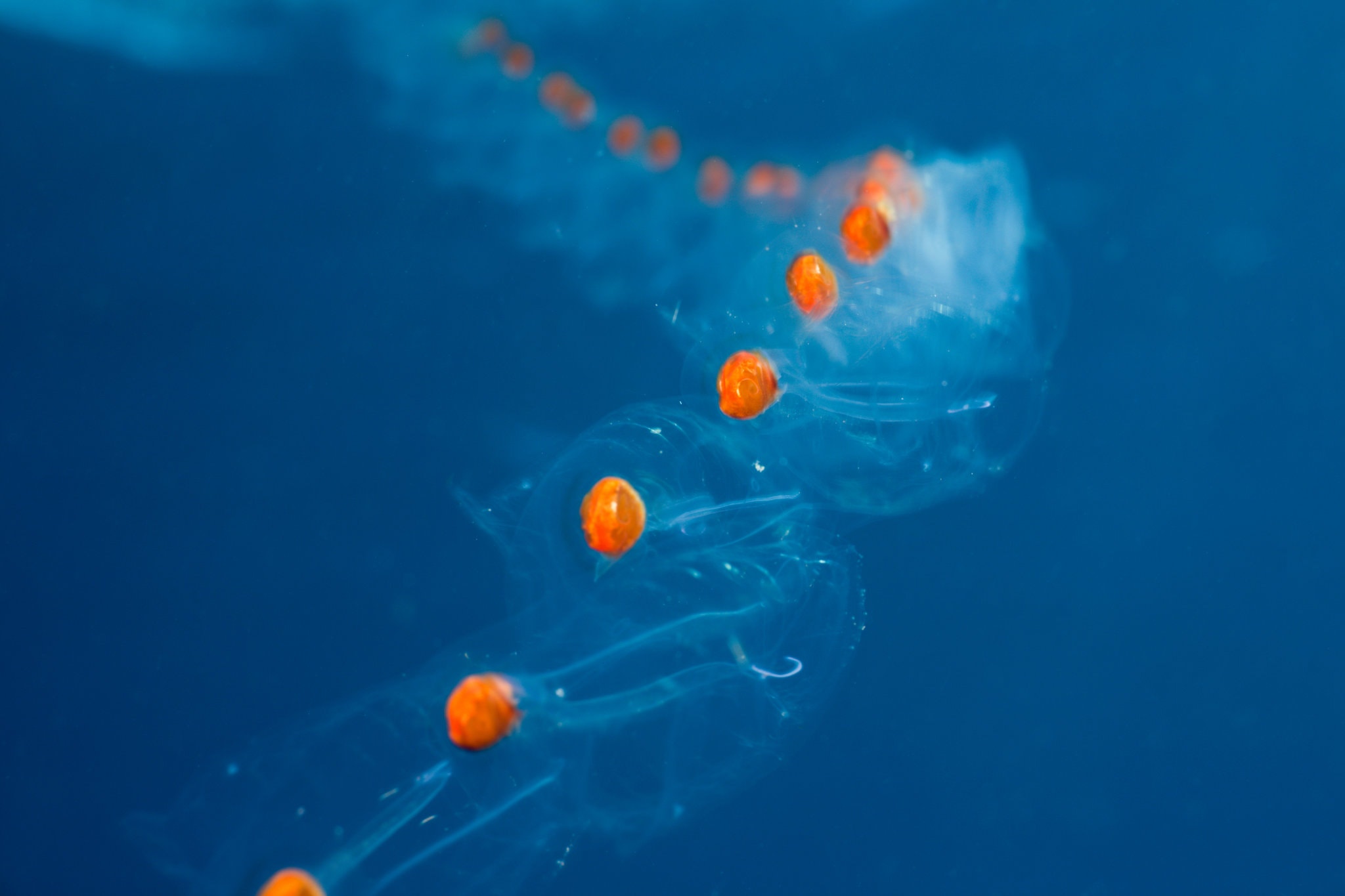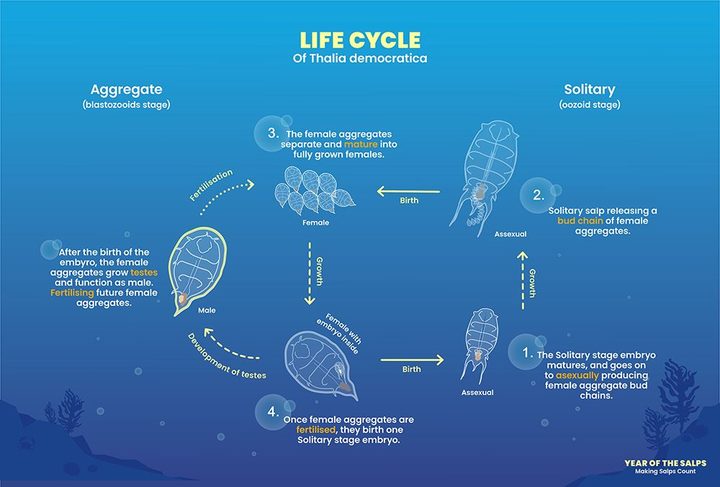A salp is a barrel shaped, jelly like tunicate that is common in equatorial, temperate, and cold seas. There are 48 species of salps, of which, 14 are found in New Zealand waters. The most abundant concentrations of salps are near Antarctica, where they sometimes form enormous swarms, often in deep water, and are sometimes even more abundant than krill.

A salps barrel-shaped body glides around the ocean by jet propulsion, sucking in water from a siphon on one end and spitting it back through another. The salp strains the pumped water through its internal feeding filters, feeding on phytoplankton. It swims alone for part of its life but it spends the rest of it with other salps, linked together in chains arranged as wheels, lines or other shapes.
The life story of the sea salp is peculiar. Salps have an intriguing way of reproducing that flips between both sexual and asexual stages. The large solitary stage is the asexual stage, which is neither male or female. It produces a long chain of clones of itself that will then become the salp that reproduces sexually. Each one starts life as a female, then switches to male and never switches back.
Salps that are joined in a chain are able to synchronise their strokes when threatened by predators or strong waves and currents. However, while linked together in day-to-day life, each salp in the chain swims at its own uncoordinated pace. Counterintuitively, this helps salps that form chains make long journeys more efficiently.
One reason for the success of salps is how fast they respond to phytoplankton blooms. When food is plentiful, salps can quickly bud off clones, which graze on the phytoplankton, quickly stripping the phytoplankton from the sea. But if the phytoplankton is too dense, the salps can clog and sink to the bottom. They may be tiny, but collectively salps play an important role in the global carbon cycle.
Phytoplankton capture the sun’s energy and atmospheric CO2 at the ocean’s surface, and are then eaten by salps (and other organisms), which make this energy available to larger animals such as fish and whales who feed on them. Consequently, this is how salps play a key role in exporting carbon from the surface to the deepest depths of the ocean.
If you would like to know more about our Marine world, how about looking at doing some of our PADI Project Aware Specialties.

Written by: Claire Hardman
Project Aware, Project Aware Fish Identification, Project Aware Coral Identification, Project Aware Shark Conservation, Project Aware Dive Against Debris

